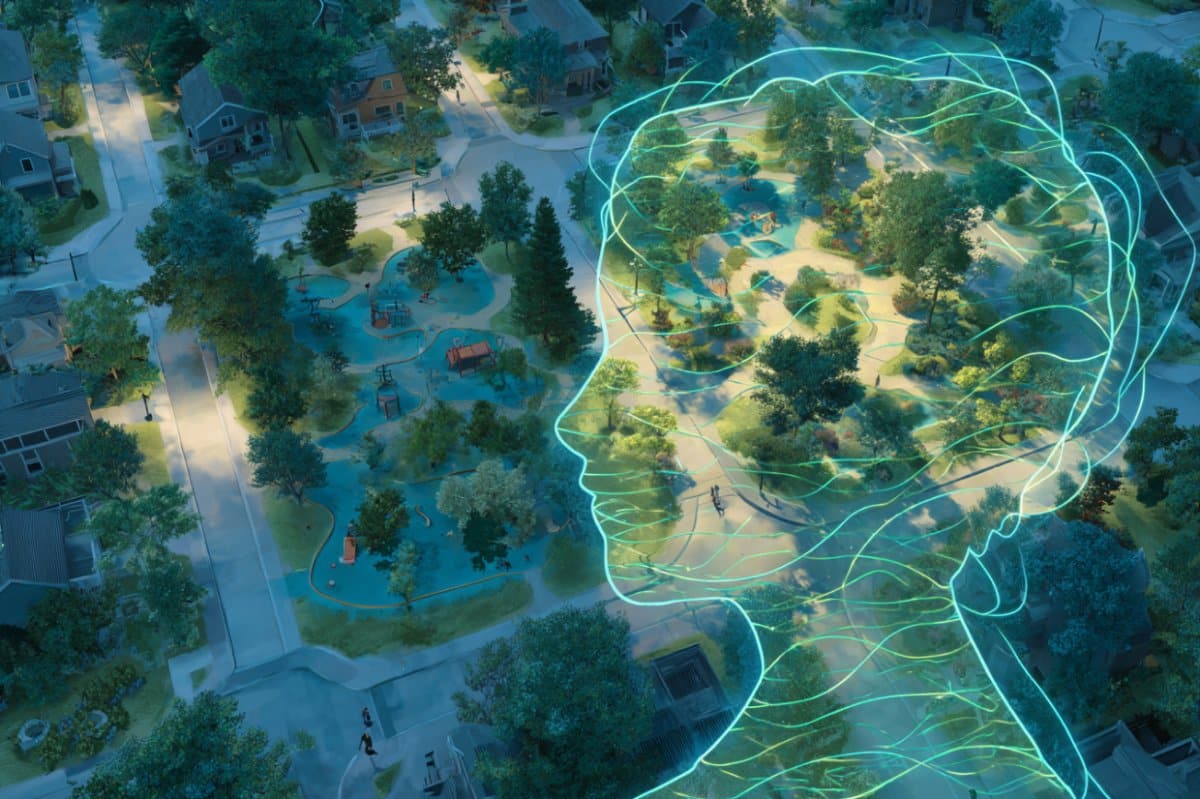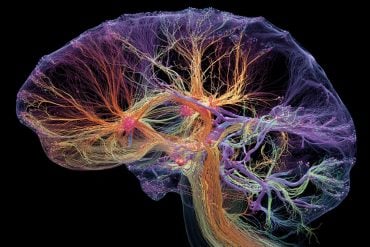Summary: Children exposed to more green space before birth and during early childhood have a lower risk of neurodevelopmental disorders, a new study shows. Analysis of over 1.8 million mother–child pairs revealed reduced rates of ADHD, autism, and learning delays in areas with higher vegetation levels.
Benefits were strongest in urban settings and among Black and Hispanic children, suggesting green spaces can help reduce health disparities. Expanding access to green environments may offer a simple, effective way to support healthy brain development.
Key Facts:
- Protective Effect: Green space linked to lower risks of ADHD, autism, and learning delays.
- Timing Matters: Benefits observed with preconception, prenatal, and early childhood exposure.
- Equity Impact: Strongest benefits found in urban and minority populations.
Source: Rutgers University
Living near green spaces before and during pregnancy as well as in early childhood is associated with a reduced risk of neurodevelopmental disorders, according to Rutgers Health researchers.
Published in Environment International, the study examined how exposure to green spaces during critical periods of early childhood development influences the risk of neurodevelopmental conditions, including attention-deficit/hyperactivity disorder (ADHD), autism spectrum disorder (ASD) and other developmental delays.
The researchers said the impact of exposure to these natural environments on neurodevelopment, particularly among socioeconomically disadvantaged populations, is understudied.
This new research sought to address this gap and explore how green space might help reduce disparities in neurodevelopmental outcomes among vulnerable groups.
“Our findings suggest that enhancing green space access in urban environments may support early childhood neurodevelopment and help reduce the burden of neurodevelopmental delays,” said Stefania Papatheodorou, an associate professor at the Rutgers School of Public Health and senior author of the study.
Researchers analyzed demographic and neurodevelopmental diagnoses data from the Medicaid Analytic Extract between 2001 and 2014. Green space exposure was measured via satellite imaging to assess vegetation levels near mothers’ residential ZIP codes during the preconception, pregnancy and early childhood periods.
The dataset consisted of more than 1.8 million racially and socioeconomically diverse mother–child pairs enrolled in Medicaid in multiple states. Their analysis found that higher levels of green space exposure were associated with a lower risk of neurodevelopmental disorders in children.
“The observed associations persisted after adjusting for individual and area-level confounders, and the results were robust to multiple sensitivity analyses,” Papatheodorou said.
The researchers also suggested that the impact of green space exposure on neurodevelopmental outcomes varied depending on the timing of exposure.
“We observed protective associations between residential green space and several neurodevelopmental outcomes across distinct exposure windows – preconception, prenatal and early childhood – suggesting the involvement of different underlying biological mechanisms,” said Papatheodorou.
Prenatal exposure was linked to a lower risk of autism spectrum disorder, while preconception exposure was inversely associated with intellectual disability. Early childhood exposure to green space was protective against learning difficulties.
Additionally, researchers found the protective associations were strongest among children living in urban areas and among Black and Hispanic children.
“Associations were more pronounced among children living in urban areas, suggesting a potentially greater benefit of green space where it is limited,” Papatheodorou said.
“Our findings suggest that enhancing green space access in urban environments may support early childhood neurodevelopment and help reduce the burden of neurodevelopmental delays.”
The study’s results point to a need for public health policies that expand access to green spaces for pregnant individuals and young children living in vulnerable areas.
“These findings suggest that increasing green space access could be a potentially modifiable environmental strategy to reduce the risk of neurodevelopmental disorders among children, especially in vulnerable, low-income populations,” Papatheodorou said.
“It also suggests that urban planning strategies that enhance residential greenness may have long-term developmental benefits for children.”
The researchers said future research will explore the biological and environmental mechanisms that may explain the association between green space and neurodevelopment and will examine long-term cognitive and behavioral health outcomes into adolescence.
Another area of study is how exposure to different types of green spaces, like parks, walking trails, and recreational fields, may be linked to neurodevelopment.
About this neurodevelopment research news
Author: Andrew Smith
Source: Rutgers University
Contact: Andrew Smith – Rutgers University
Image: The image is credited to Neuroscience News
Original Research: Open access.
“Preconception, prenatal and early childhood exposure to green space and risk of neurodevelopmental delays: a national cohort study among Medicaid enrollees” by Stefania Papatheodorou et al. Environment International
Abstract
Preconception, prenatal and early childhood exposure to green space and risk of neurodevelopmental delays: a national cohort study among Medicaid enrollees
Background
Exposure to green space is associated with children’s mental health, but its impact on neurodevelopment has been underexplored, especially in socioeconomically disadvantaged populations. This study examined the link between exposure to green space before, during, and after pregnancy and neurodevelopmental delays in children enrolled in Medicaid.
Methods
This cohort study of 1,841,915 mother–child pairs used data from the Medicaid Analytic Extract (MAX) from 2001 to 2014, with up to 14 years of follow-up. The population of pregnant women enrolled in Medicaid is characterized by younger age, racial and ethnic diversity, lower income levels, and includes individuals with disabilities. Green space exposure was measured using the Normalized Difference Vegetation Index (NDVI) at the maternal residential zip code level.
We examined exposure to green space during the preconception, prenatal, and postnatal periods to capture critical developmental windows both separately and with mutual adjustment.
Neurodevelopmental outcomes were identified using validated algorithms and included autism spectrum disorder (ASD), attention-deficit/hyperactivity disorder (ADHD), learning disabilities, speech and language disorders, coordination disorders, intellectual disabilities, and behavioral disorders.
We applied a stratified Cox model accounting for individual and area-level confounders and examined effect measure modification by urbanicity, child’s race/ethnicity, and sex.
Findings
The study found protective associations between green space exposure and most neurodevelopmental disorders. The strongest associations were seen for preconception exposure and intellectual disability (HR 0.66 [95 % CI: 0.48–0.95]), pregnancy exposure and ASD (HR 0.83 [95 % CI: 0.73–0.95]), and postnatal exposure for learning difficulties (HR 0.81 [95 % CI: 0.68–0.97]) per interquartile range (IQR = 0.12) increase in NDVI. The protective effects were stronger for Black/Hispanic children and for those living in urban areas.
Interpretation
Green space exposure could benefit the children’s neurodevelopment, with more significant benefits for the Black and Hispanic populations.
Funding
National Institute of Environmental Health Sciences R01-ES034038.







